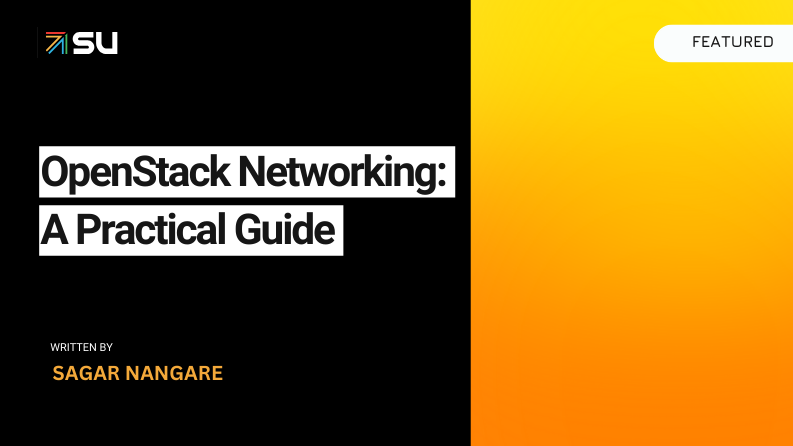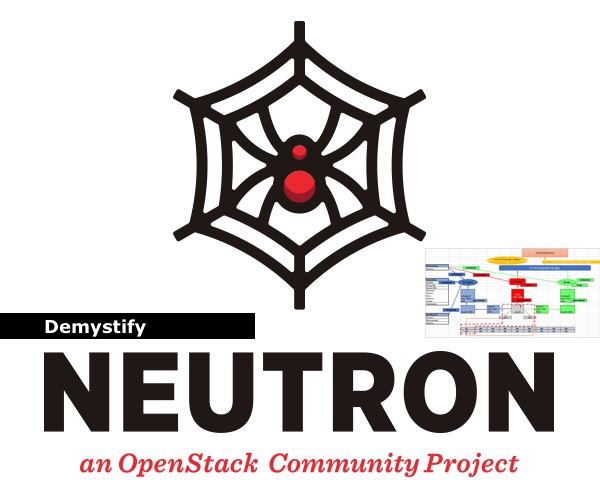What Is OpenStack Networking (Neutron)?
OpenStack Networking, also known as Neutron, is a project within the OpenStack ecosystem that provides networking capabilities as a service. This component offers users the ability to create and manage network topologies that cater to their specific needs. It’s an essential part of the OpenStack cloud platform, given the crucial role networking plays in cloud computing.
Neutron provides a scalable, API-driven, and extensible framework for managing networks and IP addresses. It also allows users to utilize a wide range of networking technologies and services, like virtual private networks (VPN), firewalls, and load balancers.
OpenStack Networking provides powerful abstraction capabilities, which is highly useful in a cloud environment. It provides a standardized and unified API to define network connectivity and addressing, allowing for different underlying technologies to be used interchangeably. This allows for greater flexibility and scalability in deploying and managing cloud networks.
OpenStack Networking Components
API Server
The API Server is the primary interface for OpenStack Networking. It exposes the network and IP management functionality to other OpenStack services and end-users. The server receives API calls and routes them to the appropriate OpenStack Networking plug-in for execution. It’s also responsible for enforcing policy controls, validating user inputs, and coordinating with other OpenStack services.
The API Server is designed to be scalable, allowing for the handling of a large number of concurrent requests. It also supports a range of API extensions, enabling users and developers to enhance and tailor the functionality of OpenStack Networking to their specific needs.
OpenStack Networking Plug-in and Agents
OpenStack Networking uses a plug-in architecture to interact with the underlying networking technologies. Plug-ins and agents are software components that implement the networking models and services defined by the API Server. They translate the abstracted API calls into specific actions that the chosen networking technology can understand.
Plug-ins are responsible for the overall management of network resources, while agents handle more specific tasks, such as establishing network connectivity for virtual machines (VMs) or managing IP addresses. The plug-in and agent architecture allows OpenStack Networking to support a wide range of networking technologies and provides a high degree of customization and scalability.
Messaging Queue
The Messaging Queue is a communication mechanism that enables the different components of OpenStack Networking to interact with each other. It facilitates the exchange of information and commands between the API Server, plug-ins, and agents. The Messaging Queue ensures that all components are synchronized and working in harmony to manage the network resources effectively.
The Messaging Queue also plays a crucial role in the scalability and reliability of OpenStack Networking. It allows for the distribution of tasks across multiple instances of the same component, improving performance and availability.
7 OpenStack Networking Capabilities with Examples
Here are some of the most common network configurations in OpenStack, with examples to illustrate the functionality.
- Address Scopes
Address scopes in OpenStack Networking allow you to manage the IP address space in your cloud network effectively. They permit the definition of distinct IP addressing realms within a single network, providing a way to separate and isolate network traffic based on the source or destination IP address.
Address scopes can be associated with subnets and subnet pools, enabling you to assign different address scopes to different parts of your network. This is especially useful in multi-tenant environments, where each tenant can have its own address scope, ensuring IP address uniqueness and isolation.
Example: Suppose you’re running a multi-tenant cloud environment. Tenant A and Tenant B both want to use the IP range 192.168.1.0/24 in their private networks. Address scopes allow you to isolate these IP ranges so that they don’t clash. You can create an address scope for Tenant A and another for Tenant B, and then create subnets within these address scopes using the same IP range, thus ensuring IP uniqueness and isolation.
- Agents and Services
Agents are software components that perform specific networking tasks in the OpenStack Networking architecture. They include the DHCP agent that provides IP address assignment services, the L3 agent that handles routing and NAT services, and the Load Balancer agent that manages load balancing services.
Each agent can be configured differently based on your networking requirements, allowing for a high degree of customization. You can also choose to deploy multiple instances of the same agent to enhance performance and reliability.
Example: If your cloud network requires both DHCP services for IP address assignment and NAT for internet access, you could deploy a DHCP agent and an L3 agent. The DHCP agent might run on a host named dhcp-host1, and the L3 agent might run on a separate host named router-host1. Each can be configured differently to meet specific routing or IP assignment requirements.
- Automatic Allocation of Network Topologies
OpenStack Networking offers the ability to automatically allocate network topologies. This feature simplifies the process of creating and managing network resources, reducing the complexity and effort required. It’s especially beneficial in large-scale cloud environments where manual network configuration can be time-consuming and error-prone.
With automatic allocation, you can create pre-defined network topology templates and apply them to new instances or projects. This ensures consistency in network configurations and reduces the risk of configuration errors.
Example: Imagine you have a standard three-tier application consisting of a web layer, an application layer, and a database layer. Each layer may have different networking requirements. You can create a pre-defined network topology template that specifies all these requirements. Whenever a new instance of this three-tier application is launched, you can apply this template, automating the network configuration and ensuring consistency.
- Availability Zones
Availability Zones in OpenStack Networking provide a way to divide your cloud environment into isolated segments based on physical location, network connectivity, or other criteria. By assigning resources to specific Availability Zones, you can control where your network components are deployed and how they are grouped together.
Availability Zones enhance the reliability and performance of your cloud network by allowing for the distribution of resources across different physical locations. They also provide a way to implement disaster recovery strategies, as resources in one Availability Zone can be configured to failover to another in the event of a failure.
Example: Let’s say you have two data centers in different geographical locations, DataCenter1 and DataCenter2. You can define each data center as an Availability Zone. When deploying a new virtual machine (VM), you can specify in which Availability Zone this VM should be created, thus controlling its physical location and the network resources it will utilize.
- BGP Dynamic Routing
OpenStack Networking supports Border Gateway Protocol (BGP) dynamic routing. BGP is a standard routing protocol that allows for the exchange of routing and reachability information among routers in different autonomous systems on the internet.
With BGP dynamic routing, you can establish routing sessions between Neutron routers and external network devices. This enables dynamic updates of routing information, improving the scalability and flexibility of your cloud network.
Example: Assume you have OpenStack deployed in an enterprise environment that is already using external routers configured with BGP. You can configure the Neutron routers to establish a BGP session with these external routers. This will enable dynamic exchange of routing information, allowing your OpenStack cloud to adapt to changes in the external network more effectively.
- DHCP High Availability
OpenStack Networking provides DHCP high availability to ensure the uninterrupted provision of DHCP services in your cloud network. By deploying multiple DHCP agents and configuring them in an active-active or active-standby mode, you can achieve high availability and redundancy for DHCP services.
In the event of a failure in one of the DHCP agents, the other agent can take over the DHCP service without disruption. This ensures that your cloud instances continue to receive IP addresses and network configurations, maintaining network connectivity.
Example: In a production environment, having a single DHCP agent could be a point of failure. You can configure two DHCP agents in active standby mode. If the active agent (dhcp-agent1) fails for any reason, the standby agent (dhcp-agent2) takes over, ensuring that DHCP service remains uninterrupted and new VMs can still get IP addresses.
- Role-Based Access Control (RBAC)
OpenStack Networking implements Role-Based Access Control (RBAC) to manage access to network resources. With RBAC, you can define access policies based on user roles, controlling who can perform what actions on which resources.
RBAC provides a flexible and secure way to manage network resources in a multi-tenant cloud environment. It allows you to establish granular access controls, ensuring that users can only access and modify network resources that they are authorized to.
Example: In a cloud project for a software development team, you may have different roles like developers, QA engineers, and admins. Using RBAC, you can define policies so that Developers can only create or modify VMs, QA engineers can access read-only network statistics, and admins have full control over the network resources. This ensures that each role can only perform actions they’re authorized to.
Conclusion
In conclusion, OpenStack Networking (Neutron) is a robust and flexible solution for managing network resources in a cloud environment. Its component-based architecture, coupled with its support for a wide range of networking technologies and services, makes it a versatile tool for any cloud network.
- Kubernetes Troubleshooting: A Practical Guide - May 21, 2024
- Overview of the OpenStack Documentation - March 18, 2024
- Refactoring Your Application for OpenStack: Step-by-Step - December 27, 2023

)










